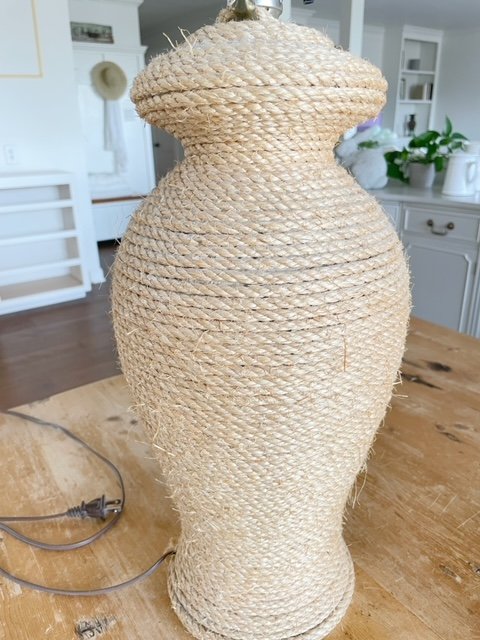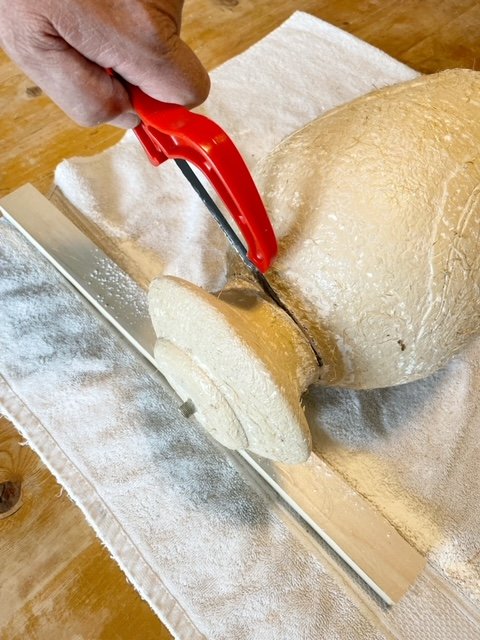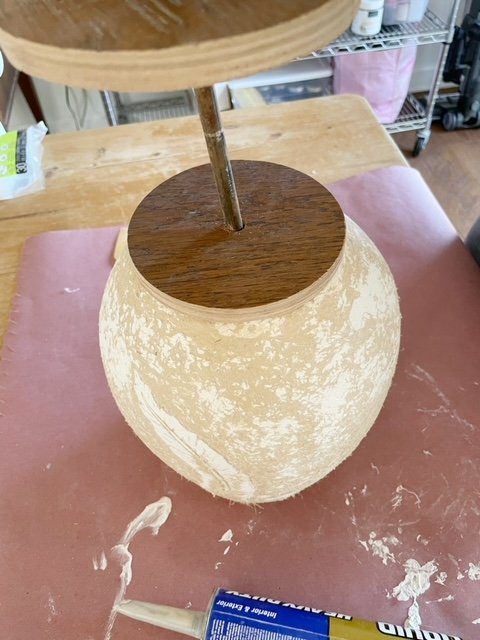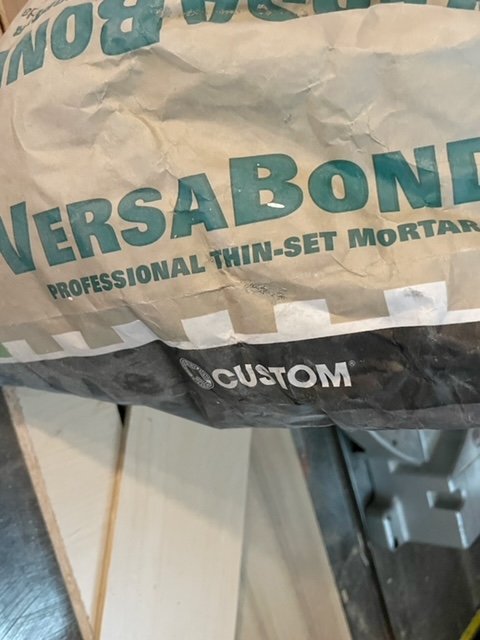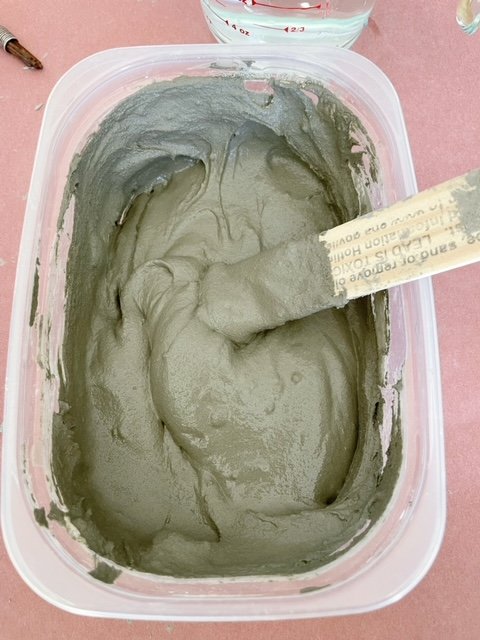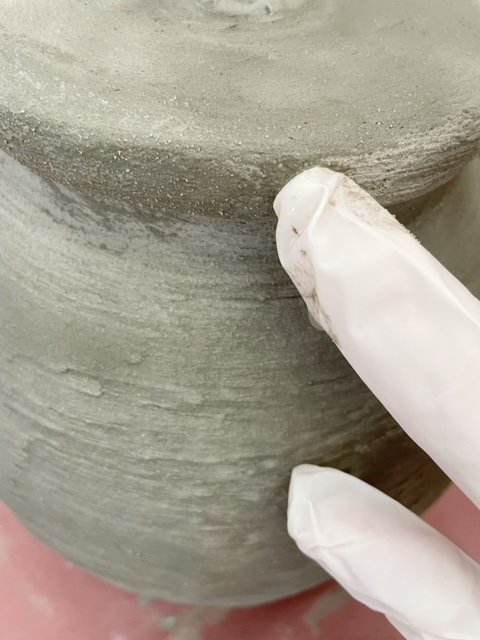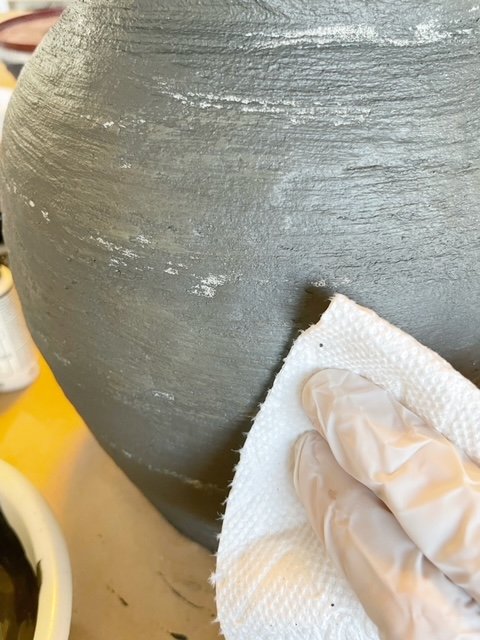Table Lamp For Living Room
(this post contains affiliate links)
So this table lamp…
It’s had two lives already.
I’m not sure exactly when I got it
but it was sometime in the 1980s.
It started life out as this Southwestern-style plaster masterpiece
with feather motifs carved on it.
(I don’t have an original photo of it — so this is what it looked like when I pulled all the jute rope off of it, which is just a little ‘hairier’ than when it was new.)
Then for its second life,
sometime around the year 2003,
I covered it with jute rope
and this is how it looked in our guest bedroom for about 10 years.
Then it went to live in storage for the next 6 years and I never really thought about it again.
Until one day, when I was in ‘the room where things go to die’ (that’s what I call the room where we’re storing everything) and I saw it sitting there, on top of the dusty old wood stove (another story!), surrounded by boxes, picture frames and 5-gallon buckets of paint
and I thought…
hey,
I could do something with that!
So now, I’m about to show you its third life.
Are you ready for this??
The first thing we did was pull the felt off of the bottom and take out all the electrical cord and parts.
Then we marked off the ‘fattest’ part of the base.
Next we marked the base all the way around where we were going to cut.
We wanted to make sure that the lamp would be level when it’s finished so we marked it as evenly as possible.
Then we used a hack saw to cut along our lines.
This was really easy to cut since the lamp is made of plaster and it’s hollow inside.
Then we cut the top off.
This part was a little harder since the top was solid plaster but we just kept turning it and sawing and finally we got through.
You can see that the pipe (where the electrical cord goes through the lamp) was stuck into the plaster so we had to break that out in order to re-use it when we put the lamp back together.
I wanted the new base to be a little shorter and squattier than it came out so I filed some of the plaster off of the top.
When I was happy with the height, we cut some wooden disks to go on the top.
We used a hole saw to cut 2 pieces of wood about 1/2 inch thick. The first one was exactly the size of the top of the lamp base. And the second one we cut about 3/8 inch larger than the first so it would overhang a little.
Then we used Liquid Nails to glue the first wood disk to the top of the base
(This is some Liquid Nails we had on hand — not sure why it came out blue at first…)
After the first disk was glued on, we glued the second, larger one to it.
We glued the wood to the lamp base with the pipe inserted in the holes because the glue will actually hold it all in place.
When we had everything glued, we weighed it all down and let it dry overnight.
Now this is where the fun begins!
Remember the ceramic bunny I transformed a few weeks ago? (If you missed it, you can read about it HERE).
Well, thin-set mortar is now my new go-to for transforming stuff! I love it because sticks really well to things, it doesn’t crack and it’s really easy to work with.
So I mixed up a batch to remake my table lamp for the living room:
I used the dry powder because that’s what we had on hand from installing our tile.
I used an old kitchen whisk to get the clumps out of the powder
so it wouldn’t have any lumps once I mixed it up.
Then I mixed it with water to make about a cup and a half of thin-set that was about the consistency of frosting.
(After you mix your thin-set, you need to let it sit for about 5 minutes and then mix it again to activate the polymers before you use it. Be sure to read the label directions.)
Then I used a 2-inch chip brush to just brush it onto the lamp base.
I applied a fairly heavy first coat. And I let that dry. I put a fan on it to speed up the process. It dried in about 2 hours.
When it was dry, I knocked down some of the nubs with a piece of sandpaper.
I wasn’t too worried about the finish on the first coat since I would be covering it with a second coat.
Then I mixed up some more thin-set and applied a second coat, making sure I was covering up all the feather carvings.
For this coat, I made sure that the brush strokes were visible so that they would leave a finished texture.
As the thin-set was drying, I smoothed out the edges of the wooden disks with my finger.
(If you wear gloves when working with this product, it will keep your hands from getting dried out.)
Next, I let the lamp dry overnight.
Now, it’s time to paint!
I just used craft paint in black, and two beiges: honeycomb and territorial beige.
I wanted my lamp base to be a warm charcoal color so I mixed the two beiges into some of the black paint
I painted the whole lamp with this first color, leaving very small amounts of the light gray thin-set showing through in some areas
Then I added more honeycomb beige to the first color mix to make a lighter version
and then I dry-brushed it on over the first coat.
I brushed it on and rubbed it in here and there with a paper towel. I covered some of the light gray thin-set with this lighter color too.
And then that was it for the painting.
Finally, we drilled a hole in the back for the cord,
touched up the inside of the hole with paint,
and installed all the electrical parts back into the lamp. We also added a piece of PVC over the pipe just below the socket to make that part larger around. (We painted it the same color as the lamp base.)
And now…
Pin for later
here’s the finished table lamp for the living room!
Pin for later
I love the way this turned out!
We went from this ugly, outdated lamp
to this upcycled, updated beauty!
Pin for later
Get ideas for decorating with indoor plants HERE
So if you happen to have an old plaster lamp hanging around your house,
Pin for later
or if you find one at a yard sale or thrift store,
try giving it a makeover…
Pin for later
As an Amazon Associate and rewardStyle Affiliate, I may earn a small commission on qualifying purchases at no additional cost to you.



